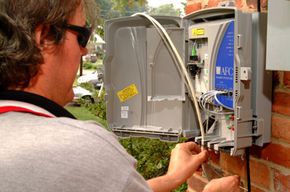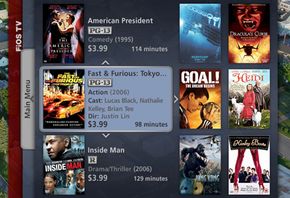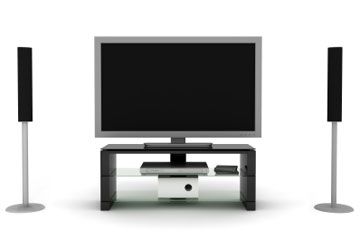There are a limited number of companies making fiber-to-the-home or fiber-to-the-premises a central part of their services.
Verizon markets its services under the FiOS name. The company offers many different plans, feature various levels of service and prices for its fiber-to-the-home technology. Other companies offering this option include AT&T and Cox Communications.
Cox recently began exploring the FTTP option, requesting information from its vendors on the subject. In the past, the company has provided FTTP solutions for planned communities as they are built out.
A few years ago, AT&T resisted making fiber-to-the-home a central strategy, and instead focuses on providing the service for new home developments. The company now focuses on providing fiber-to-the-node, or FTTN, which brings the fiber cable to a local hub, but often uses standard digital subscriber line (DSL) technology to connect a home to the hub. AT&T's FTTP service is called U-verse.
Verizon breaks its FiOS plans into the categories of "fast, faster, faster plus and fastest." Download speeds range from 10 to 50 Mbps, and upload speeds can run up to 20 Mbps. Prices also vary based on whether the customer also has Verizon phone service.
All plans include round-the-clock live technical support from the Verizon Fiber Solutions Center. Plans also include nine e-mail accounts, 10 megabytes of space for hosting a Web page, member discounts and other services. Each plan also includes access to a variety of online entertainment, including video, music and games. Subscribers can read movie reviews and watch film trailers, get album reviews and exclusive Verizon mixes and play games at the Verizon Arcade. Customers can also start blogs, join discussion forums and post pictures of friends and family.
Subscribers also get access to news channels and other comprehensive programs including channels such as ESPN 360, Disney, Movies.com Max and Soapnetic.
Prices vary based on service-plan download speeds. Though fiber optic lines are high-bandwidth connections, actual connection speeds vary based on a variety of factors. These factors include the way a subscriber's computer is configured, home networking hardware and the number of computers on the home's network.
Available bandwidth is another consideration, along with network and Internet congestion at any given time. The type and condition of the wiring at the subscriber's location and the speeds of Web sites visited are other factors that determine connection speed. To achieve maximum speed, a hard-wired connection is required.
AT&T also offers Internet, voice and television on its U-Verse service. Plans start at $44 a month and range to $124 per month. The top-end plan provides download speeds of up to 10 Mbps downstream and 1.5 Mbps upstream. It also provides up to 320 TV channels, including sports and movie packages, and voice service.
This package allows users to play online games, access to the AT&T blue room for exclusive music events, unlimited online storage with Flickr, a homepage, 2 gigabytes of e-mail storage, 10 additional e-mail accounts and more.




